Filter by
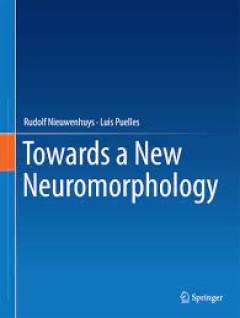
Towards a New Neuromorphology
This book demonstrates that the systematic study of gene expression patterns in embryonic and adult brains, in combination with selected data from earlier studies, can pave the way for a new neuromorphology, the most salient features of which may be summarized as follows: (1) Causal analysis of molecular patterning at neural plate and early neural tube stages has shown that the CNS is essential…
- Edition
- 1
- ISBN/ISSN
- 978-3-319-79829-5
- Collation
- XV, 344
- Series Title
- -
- Call Number
- -

Epilepsy Towards the Next Decade New Trends and Hopes in Epileptology
A comprehensive collection of the most recent knowledge on the biological bases of various kinds of epilepsies and modern clinical approaches to their treatment. Epilepsy affects about 0.5-1% of the world's population (about 50,000,000 individuals) and the main goal of its treatment is to eliminate seizures without creating side effects. Despite numerous advances in the treatment of epilepsy an…
- Edition
- -
- ISBN/ISSN
- 978-3-319-12283-0
- Collation
- 19 b/w illustrations, 21 illustrations in colour
- Series Title
- -
- Call Number
- -
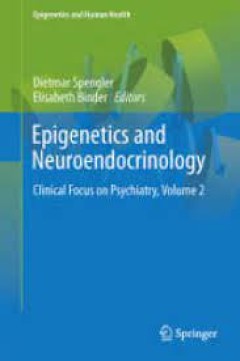
Epigenetics and Neuroendocrinology Clinical Focus on Psychiatry, Volume 2
The field of neuroendocrinology has extended from the initial interest in the hypothalamic control of pituitary secretion to embrace multiple reciprocal interactions between the central nervous system (CNS) and endocrine systems in the coordination of homeostasis and various physiological responses from adaptation to disease. Most recently, epigenetic mechanisms were recognized for their role i…
- Edition
- -
- ISBN/ISSN
- 978-3-319-29901-3
- Collation
- 22 b/w illustrations, 3 illustrations in colour
- Series Title
- -
- Call Number
- -

Epigenetics and Neuroendocrinology Clinical Focus on Psychiatry, Volume 1
The field of neuroendocrinology has extended from the initial interest in the hypothalamic control of pituitary secretion to embrace multiple reciprocal interactions between the central nervous system and endocrine systems in the coordination of homeostasis and various physiological responses from adaptation to disease. Most recently, epigenetic mechanisms were recognized for their role in the …
- Edition
- -
- ISBN/ISSN
- 978-3-319-24493-8
- Collation
- 6 b/w illustrations, 30 illustrations in colour
- Series Title
- -
- Call Number
- -
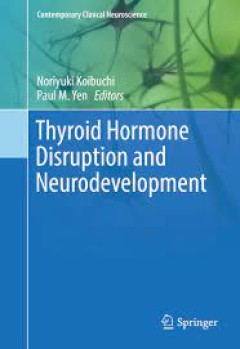
Thyroid Hormone Disruption and Neurodevelopment
Thyroid hormone plays an important role in development and functional maintenance in the central nervous system. Deficiency of thyroid hormone during fetal and early postnatal life induces abnormal development known as cretinism in humans. However, the molecular mechanism of thyroid hormone action has not yet been fully understood. Thyroid hormone action in the brain may be disrupted under v…
- Edition
- -
- ISBN/ISSN
- 978-1-4939-3737-0
- Collation
- 6 b/w illustrations, 16 illustrations in colour
- Series Title
- -
- Call Number
- -
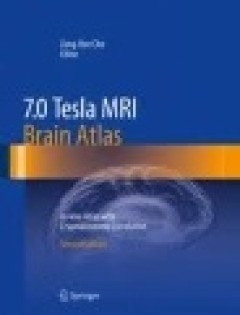
7.0 Tesla MRI Brain Atlas: In-vivo Atlas with Cryomacrotome Correlation
The inaugural publication of the 7.0 Tesla MRI Brain Atlas: In Vivo Atlas with Cryomacrotome Correlation in 2010 provided readers with a spectacular source of ultra-high resolution images revealing a wealth of details of the brainstem and midbrain structures. This second edition contributes additional knowledge gained as a result of technologic advances and recent research. To facilitate identi…
- Edition
- -
- ISBN/ISSN
- 978-3-642-54398-2
- Collation
- -
- Series Title
- -
- Call Number
- 616.0757 SEV s

Endocannabinoids
There is currently considerable interest in the development of medicines that would enhance endocannabinoid-induced “autoprotection”, for example through inhibition of endocannabinoid metabolizing enzymes or cellular uptake processes or that would oppose endocannabinoid-induced “autoimpairment”. This volume describes the physiology, pathophysiology and pharmacology of the endocannabinoi…
- Edition
- -
- ISBN/ISSN
- 978-3-319-20825-1
- Collation
- XII, 475
- Series Title
- -
- Call Number
- -

Neurotropic Viral Infections:Volume 2: Neurotropic Retroviruses, DNA Viruses,…
This second edition is a comprehensive study of the viruses that affect the brain and the central nervous system. Along with a focus on the viruses themselves, it addresses the diseases they cause, current treatments and preventive measures. Also discussed are the unique aspects of how viruses cause disease and why certain hosts are more susceptible (e.g., polymorphisms, age, co-morbidities). …
- Edition
- 2
- ISBN/ISSN
- 978-3-319-33188-1
- Collation
- XII, 557
- Series Title
- -
- Call Number
- -
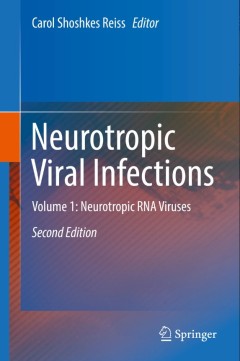
Neurotropic Viral Infections:Volume 1: Neurotropic RNA Viruses
This second edition is a comprehensive study of the viruses that affect the brain and the central nervous system. Along with a focus on the viruses themselves, it addresses the diseases they cause, current treatments and preventive measures. Also discussed are the unique aspects of how viruses cause disease and why certain hosts are more susceptible (e.g., polymorphisms, age, co-morbidities). …
- Edition
- 2
- ISBN/ISSN
- 978-3-319-33131-7
- Collation
- X, 370
- Series Title
- -
- Call Number
- -
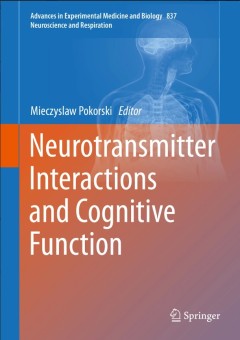
Neurotransmitter Interactions and Cognitive Function
A host of neurotransmitters and neuroactive substances underlies respiratory regulation in health and disease. The centerpiece of investigations regarding adaptation to hypoxia and sensorial perception has been the dopaminergic system. It is now clear that a complex interaction among various neuroactive substances, rather than a single one, forms the basis of respiratory changes. The research o…
- Edition
- 1
- ISBN/ISSN
- 978-3-319-10005-0
- Collation
- IX, 67
- Series Title
- Advances in Experimental Medicine and Biology
- Call Number
- -
 Computer Science, Information & General Works
Computer Science, Information & General Works  Philosophy & Psychology
Philosophy & Psychology  Religion
Religion  Social Sciences
Social Sciences  Language
Language  Pure Science
Pure Science  Applied Sciences
Applied Sciences  Art & Recreation
Art & Recreation  Literature
Literature  History & Geography
History & Geography